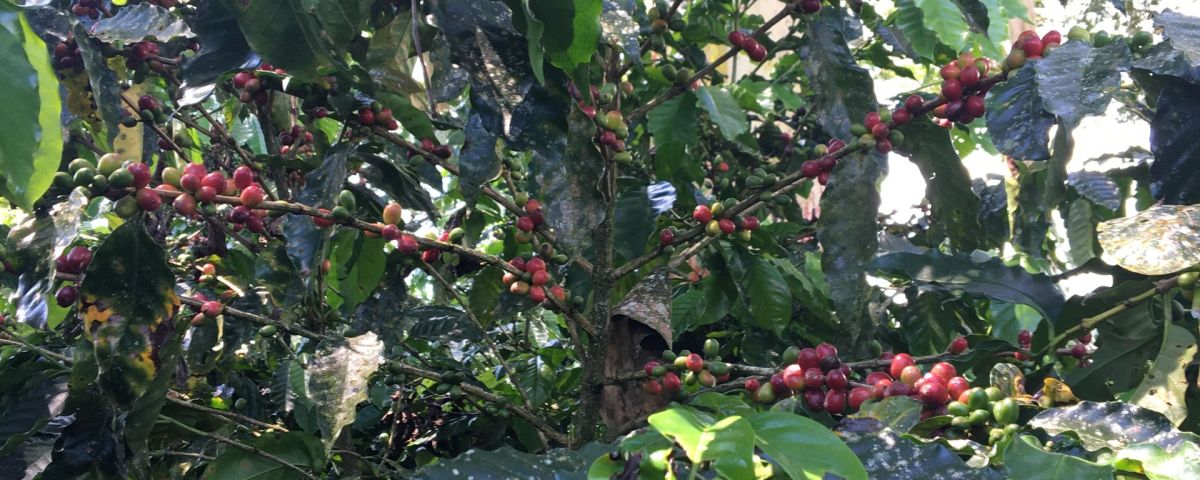Sarah Archibald describes her team’s latest research seeking to better understand emergent herbaceous communities in organic coffee agroforestry systems by identifying their taxonomic and functional diversity as well as their management by interviewing farmers in Costa Rica.
Coffee agroecosystems range in management and diversity, from monocultures with chemical inputs to biologically complex multi-strata agroforestry systems. With the demand for organic coffee expected to increase by 10% annually over the next decade, understanding the often overlooked understory stratum – the herbaceous community that emerges without herbicides – will be key to successful transitions to organic agriculture.
Our research focused on shade-grown coffee systems in the Central Valley of Costa Rica to i) measure the diversity in the herbaceous stratum and also ii) document farmers’ process in managing the herbaceous community. This point was of particular interest to us as weeds are often cited as a major barrier to converting to organic coffee production by farmers in our study region.
We used a transdisciplinary approach, applying a functional traits lens to describe the extent of functional diversity in this stratum in relation to farm conditions but also the well-established method of cognitive mapping to assess farmer decision making processes.
The use of functional diversity metrics provided a singular value for us to relate to farmers’ mental models on farm management, a nexus in these social-ecological systems. This link was critical to our research as herbaceous communities in agroecosystems, unlike natural systems, can emerge from decisive selection or planting by farmers through processes such as consultation, design and decision making.
To explore these points, and particularly the social-ecological interactions surrounding herbaceous communities within coffee agroecosystems, we selected a suite of small farms (<3ha of land) from the Association of Agroecological and Organic Producers (APOYA) network in Costa Rica. By using both social and ecological factors in modelling functional diversity, we show that the complexity in the herbaceous community management underscores on-farm diversity.

Ecologically, we found that the taxonomic diversity of the herbaceous stratum was relatively high compared to shade tree stratum. Across the 45 plots we found 38 herbaceous species from 20 taxonomic families. The herbaceous communities were functionally diverse, which provides insight into the previously undocumented source of associated diversity provided by the herbaceous stratum in agroforestry systems.
At the same time and in the same farms, we found that the mental models representing farmer decision-making processes were highly variable, with a nearly 30% increase in cognitive map density from the simplest map to the most complex. This multiplicity across the farmer’s mental models is to be expected as there are very few herbaceous community resources, and limited training on herbaceous community management, thus a range of management practices emerge.
Future implications
Building upon work in leaf functional traits and linking farmer perception to management (previously highlighted on The Applied Ecologist), our study found important socio-ecological interactions and confirms farmers’ role in shaping herbaceous diversity.
Understanding pathways of farmer decision-making on managing this herbaceous community can appropriately situate on-farm practice and policy for the transition to organic production, and inform emerging agri-environmental programs. We have also provided feedback from this research to the APOYA network to support a herbaceous community workshop.

As transitions to organic coffee farms occur, we argue that by promoting a suite of interconnected options for on-farm management of the emerging herbaceous stratum can shape diverse and desirable plant communities. Further research focused on organic herbaceous community management and resulting impact on farmer labour, coffee yield as well as other forms of agroecosystem diversity will provide better tools to support on-farm management and the diversity of this important stratum in organic agriculture.
Our study contributes new findings to support the management of agrobiodiversity and to the growing literature on agroecological transitions. We hope that this research will encourage further work on herbaceous communities in agroforestry systems and that the resulting feedback be shared with farming communities. We are also excited by the role Ecological Solutions and Evidence can play in highlighting farmer and ecosystem interactions.
Read the full article: “From the ground up: Patterns and perceptions of herbaceous diversity in organic coffee agroecosystems” in Issue 3:3 of Ecological Solutions and Evidence.

